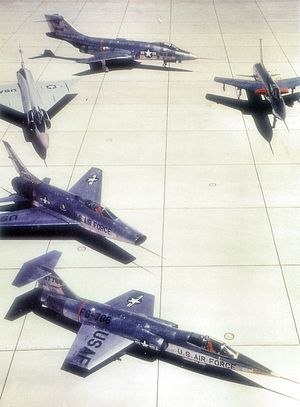As discussed in a previous column, the U.S. is rethinking its fighter acquisition plans, with radical new ideas about how to build the successors to the F-22 and the F-35. It is not obvious how this will work on the export market, or what kind of impact American plans will have on broader demand for fighter aircraft.
The first Century Series worked relatively well on the export market. The F-100 served in five air forces; the F-101 in three; the F-102 in three (U.S., Turkey, and Greece); the F-104 in fifteen. The F-105 and F-106 served exclusively in the U.S. armed forces. The idea of a variety of fighters rather than a single aircraft has superficial appeal, as customers might have several different choices for fulfilling their specific needs. That said, it’s worth noting that the F-35, the sins of which the new “century series” is intended to absolve, has been wildly successful on the export market. For everything else that it is—America’s answer to the One Belt, One Road, the biggest defense project in history, a blight upon humankind—the F-35 Panther is, for many of its users, simply an airplane that it is intended to do the things that airplanes do. It is not at all clear what the YF-(50,59) Multitude will be.
Will the airframes and aircraft be sufficiently similar that a supply chain of the sort that has enabled the F-35 to spread its tendrils across the world develop? Will buyers have access to the hardware and software updates that are supposed to keep the Multitude at the leading edge of capability? Moreover, the short production runs don’t seem to suggest that would-be customers will have much of an opportunity to decide on what they want. Potentially, designs for older fighters could be exported to international manufacturing bureaus. Similarly, manufacturers could continue the production of old designs intended for sale on the export market. Given the complexities of integrating munitions, avionics, and other support systems into new aircraft, it also remains to be seen how easy it would be for export customers to integrate their own systems into whichever of the YF-(50,59) Multitude the decide to purchase.
Finally, the same political dynamics that undergird the domestic politics of fighter acquisition (manufacturing spread across multiple facilities in order to even out the economic benefits and win political support) also exist internationally. Indeed, the ability to use a fighter acquisition to acquire technology and to spread patronage and jobs across the economy is arguably even more important to export success than to domestic acquisition.
For as long as the United States has had an aviation industry, exports have formed a big part of the business. There may well be a way for the U.S. to square this radical new approach with its traditional export success, but at the moment it is not obvious how the process will play out. And this does not even touch upon questions of intellectual property and technology management; it seems as if the United States would be most interested in preventing other countries from copying the model, rather than facilitating their entry. In any case, countries that have traditionally depended on the United States for their fighters have legitimate reasons for concern with this new model.

































